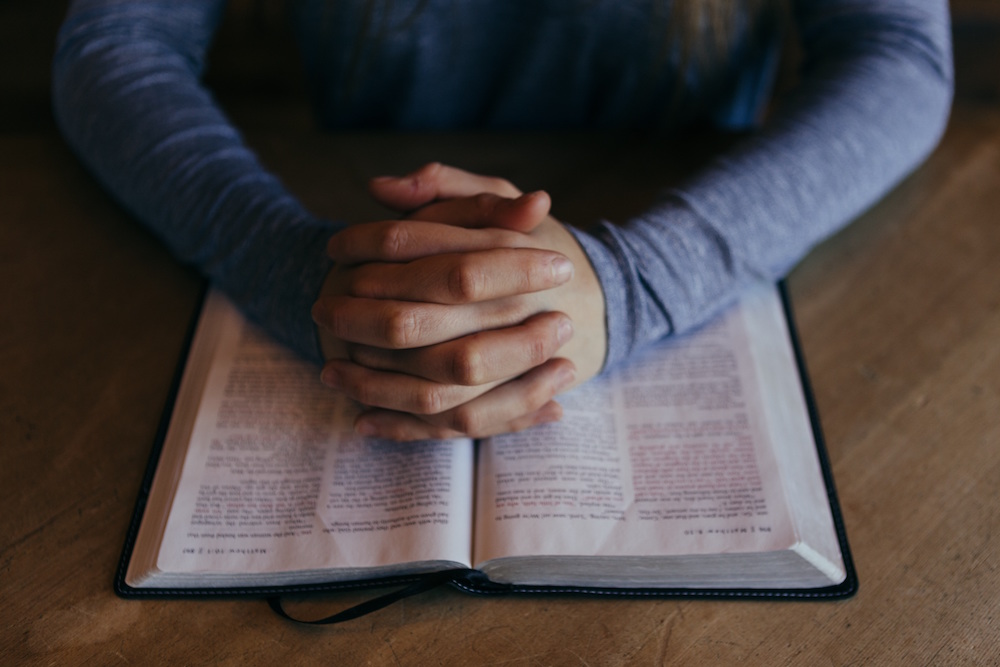In this context, I would like in particular to recall and recommend the ancient tradition of “Lectio divina“: “the diligent reading of Sacred Scripture accompanied by prayer brings about that intimate dialogue in which the person reading hears God who is speaking, and in praying, responds to him with trusting openness of heart” (cf. “Dei Verbum,” n. 25). If it is effectively promoted, this practice will bring to the Church — I am convinced of it — a new spiritual springtime. – Pope Benedict XVI
As we progress through the various methods of prayer given to us over the centuries, we come upon the very ancient method of lectio divina. Translated as “divine reading,” lectio divina is a way of praying that allows a soul to immerse themselves into sacred scripture and ruminate on the Word of God. Above all else it is an exercise in listening to the voice of God and hearing what He has to say to us.
[featured-image single_newwindow=”false”]
Before we go into a detailed explanation of lectio divina, here is a general outline of its origin and its various steps.
Historically speaking, reading sacred scripture and finding its spiritual meanings goes back all the way to Jesus Christ Himself. During His earthly ministry, Jesus repeatedly quoted the Jewish Old Testament and interpreted the various spiritual meanings behind it. The apostles followed this tradition of reading Scripture and dwelt on the depths of meaning in order to pass it on to future generations.
As the centuries past, priests, bishops and religious further refined this method of reading Scripture and began to see it as a way of prayer that was essential to the spiritual life. Saint Benedict in the sixth century made the divine reading of scripture a central part of monastic life. He included it in his Rule, instructing his monks to set aside time everyday for lectio divina:
Idleness is the enemy of the soul. Therefore, the brothers should have specified periods for manual labor as well as for prayerful reading (lectione divina). RB, 48:1.
It was not until the 12th century that lectio divina received a structured format that we continue to use today. During this time a Carthusian monk named Guigo was inspired to write down four steps for the fruitful practice of lectio divina. He wrote:
One day when I was busy working with my hands I began to think about our spiritual work, and all at once four stages in spiritual exercise came into my mind: reading, meditation, prayer, and contemplation. These make a ladder for monks by which they are lifted up from earth to heaven. It has few rungs, yet its length is immense and wonderful, for its lower end rests upon the earth, but its top pierces the clouds and touches heavenly secrets. (Guigo the Carthusian, Guigo II: Ladder of Monks and Twelve Meditations, emphasis added)
These four steps or “rungs” of the ladder are typically known by their Latin names:
- lectio (reading)
- meditatio (meditation)
- oratio (prayer)
- contemplatio (contemplation)
Over the next few weeks we will walk through these four steps of reading scripture and explain how to do each one. It is a beautiful practice, one that allows a soul to plumb the depths of God’s Word and kindle a fire within.
Often sacred scripture can seem dull and boring, but when read using the lectio divina method, the words jump off the page and into your heart.
Let us end with further encouragement from Saint John Paul II:
The Word of God is the first source of all Christian spirituality. It gives rise to a personal relationship with the living God and with his saving and sanctifying will. It is for this reason that from the very beginning…what is called Lectio Divina has been held in the highest regard. By its means the Word of God is brought to bear on life, on which it projects the light of that wisdom which is a gift of the Spirit. (Vita Consecrata, emphasis added)
Read the Entire Series:
- Breathe Life into the Divine Office with C.S. Lewis’ Reflections on the Psalms
- An Introduction to the Four Volume Breviary
- Beginner’s Guide to Praying the Liturgy of the Hours
- Physical Breviary vs. iBreviary: How is a Person to Pray?
- The Digital Breviary: A Guide to Praying the Divine Office in a Digital World
- 5 Reasons to Pray the Divine Office Daily
- 5 Practical Ways to Prepare for Mass
- How to Actively Participate in Mass
- 3 Ways to Imitate Jesus’ Vocal Prayer
- How to Pray Like Jesus: The Ultimate Checklist

